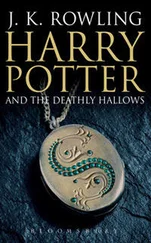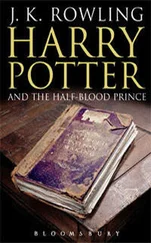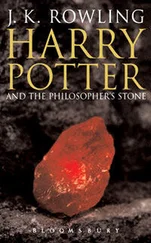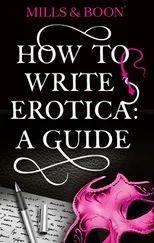Before the wizarding community was forced into hiding, it was not unusual for a wizard to live in the Muggle community and hold down what we would now think of as a Muggle job.
It is widely believed in wizarding circles that Sir Cadogan was one of the famous Knights of the Round Table, albeit a little-known one, and that he achieved this position through his friendship with Merlin. He has certainly been excised from all Muggle volumes of King Arthur’s story, but wizarding versions of the tales include Sir Cadogan alongside Sir Lancelot, Sir Bedivere and Sir Percivale. These tales reveal him to be hot-headed and peppery, and brave to the point of foolhardiness, but a good man in a corner.
Sir Cadogan’s most famous encounter was with the Wyvern of Wye, a dragonish creature that was terrorizing the West Country. At their first encounter, the beast ate Sir Cadogan’s handsome steed, bit his wand in half and melted his sword and visor. Unable to see through the steam rising from his melting helmet, Sir Cadogan barely escaped with his life. However, rather than running away, he staggered into a nearby meadow, grabbed a small, fat pony grazing there, leapt upon it and galloped back towards the wyvern with nothing but his broken wand in his hand, prepared to meet a valiant death. The creature lowered its fearsome head to swallow Sir Cadogan and the pony whole, but the splintered and misfiring wand pierced its tongue, igniting the gassy fumes rising from its stomach and causing the wyvern to explode.
Elderly witches and wizards still use the saying ‘I’ll take Cadogan’s pony’ to mean, ‘I’ll salvage the best I can from a tricky situation’.
Sir Cadogan’s portrait, which hangs on the seventh floor of Hogwarts Castle, shows him with the pony he rode forever more (which, understandably perhaps, never much liked him) and accurately depicts his hot temper, his love of a foolhardy challenge and his determination to beat the enemy, come what may.
CHAPTER SIX
SECRETS OF THE CASTLE


Hogwarts is teeming with secrets. It seems from Harry’s explorations that every locked door and empty classroom conceals a rare magical object or fearsome monster of some kind. Let’s start with one of the most tempting but potentially devastating objects hidden in the grounds: the Mirror of Erised.
Mirror Of Erised
by J.K. Rowling

The Mirror of Erised is a very old device. Nobody knows who created it, or how it came to be at Hogwarts School. A succession of teachers have brought back interesting artefacts from their travels, so it might have arrived at the castle in this casual manner, either because the teacher knew how it worked and was intrigued by it, or because they did not understand it and wished to ask their colleagues’ opinions.
The Mirror of Erised is one of those magical artefacts that seems to have been created in a spirit of fun (whether innocent or malevolent is a matter of opinion), because while it is much more revealing than a normal mirror, it is interesting rather than useful. Only after Professor Dumbledore makes key modifications to the mirror (which has been languishing in the Room of Requirement for a century or so before he brings it out and puts it to work) does it become a superb hiding place, and the final test for the impure of heart.
The mirror’s inscription (‘erised stra ehru oyt ube cafru oyt on wohsi’) must be read backwards to show its true purpose.
Albus Dumbledore, who brings it out of hiding, puts it back where he found it when it has achieved his purpose in Philosopher’s Stone . We must conclude, therefore, that the mirror was destroyed, along with all the other contents of the Room of Requirement, during the Battle of Hogwarts.
J.K. Rowling’s thoughts
Albus Dumbledore’s words of caution to Harry when discussing the Mirror of Erised express my own views. The advice to ‘hold on to your dreams’ is all well and good, but there comes a point when holding on to your dreams becomes unhelpful and even unhealthy. Dumbledore knows that life can pass you by while you are clinging on to a wish that can never be – or ought never to be – fulfilled. Harry’s deepest yearning is for something impossible: the return of his parents. Desperately sad though it is that he has been deprived of his family, Dumbledore knows that to sit gazing on a vision of what he can never have, will only damage Harry. The mirror is bewitching and tantalising, but it does not necessarily bring happiness.

Dumbledore may have concealed what he truly saw when looking in the Mirror of Erised, but the Headmaster didn’t hide all of his memories. Over the years, the powerful Pensieve in the Headmaster’s office was used to let Harry explore Tom Riddle’s mysterious past, the Crouch family’s terrible history, and Slughorn’s greatest mistake. Like many items in the Headmaster’s office, a Pensieve is hard to come by and tricky to use.

A Pensieve is a wide and shallow dish made of metal or stone, often elaborately decorated or inlaid with precious stones, and carrying powerful and complex enchantments. Pensieves are rare, because only the most advanced wizards ever use them, and because the majority of wizardkind is afraid of doing so.
The perceived dangers of the Pensieve relate to its power over memory or thought. The Pensieve is enchanted to recreate memories so that they become re-liveable, taking every detail stored in the subconscious and recreating it faithfully, so that either the owner, or (and herein lies the danger) a second party, is able to enter the memories and move around within them. Inevitably, those with things to hide, those ashamed of their pasts, those eager to keep hold of their secrets, or protective of their privacy, will be wary of an object like the Pensieve.
Even more difficult than the recreation of memories is the use of a Pensieve to examine and sort thoughts and ideas, and very few wizards have the ability to do so. Albus Dumbledore is seen using the Hogwarts Pensieve in this way, notably in Chapter Thirty of Harry Potter and the Goblet of Fire , when he adds thoughts to the Pensieve and Harry’s face turns into Snape’s; Dumbledore is reminding himself of the hidden connection between Snape and Harry (that Snape was in love with Harry’s mother, and is now – though immensely grudgingly – honour-bound to protect him).
Traditionally, a witch or wizard’s Pensieve, like their wand, is buried with them, as it is considered an intensely personal artefact; any thoughts or memories left inside the Pensieve are likewise interred with their owner, unless he or she has requested otherwise. The Hogwarts Pensieve, however, belongs not to any individual but to the school. It has been used by a long line of headmasters and headmistresses, who have also left behind their life experience in the form of memories. This forms an invaluable library of reference for the headmaster or headmistress of the day.
Читать дальше















